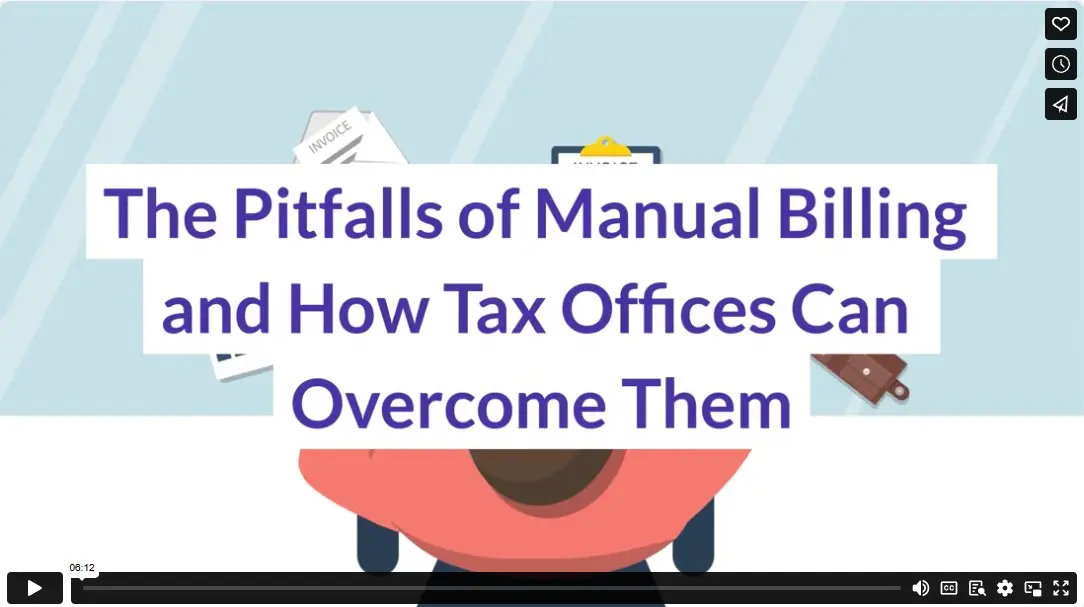If you’re still billing manually at your tax office, you’re likely leaving money on the table. Manual invoicing not only wastes time but also increases the risk of calculation errors, forgotten charges, and delayed payments. In an industry where trust and efficiency are crucial, accounting billing software delivers the automation and accuracy your practice needs to thrive.
The Hidden Dangers of Manual Billing
You might think a simple spreadsheet or handwritten invoice is “good enough,” but manual billing carries risks that can quietly chip away at your profitability. Errors are almost inevitable when you’re manually entering payment amounts, client names, and service descriptions. One wrong digit can be costly, and your practice must spend valuable time reworking invoices instead of serving clients.
When your billing system relies on manual tracking, you’re also vulnerable to delays. Invoices might sit unsent for days, or worse, get lost altogether. This lack of efficiency affects your cash flow, which can make managing your business finances unnecessarily stressful.
Additionally, manual billing tends to look less professional. Today’s clients expect seamless, digital experiences. When you’re sending paper invoices or clunky spreadsheets, it reflects poorly on your brand. It might even lead clients to wonder if your accounting services are as outdated as your billing practices.
Why Delayed Payments Are More Common With Manual Processes
Slow invoicing leads to slow payments. When clients don’t receive their invoices quickly, they delay their own payment processes. In many cases, a client who forgets about an overdue invoice isn’t being intentionally negligent. They just have their own busy schedules to manage.
Manual billing also makes it difficult to send automated reminders. Instead of automatic nudges, you or your team must manually track down every unpaid invoice, which takes valuable time away from growing your business.
Errors in manually created invoices can also trigger disputes. If a client notices a mistake, they’re far more likely to delay payment until the issue is resolved, adding extra friction to an already fragile process.
How Automation Transforms Your Billing Workflow
Embracing modern accounting billing software removes many of the pitfalls associated with manual invoicing. With the right system, you can:
- Automatically generate invoices based on completed work or predefined billing cycles.
- Schedule recurring invoices for clients on retainer.
- Send automated reminders when payments are coming due or overdue.
These automated features mean you spend less time chasing down payments and more time focusing on high-value activities like client advisory services or strategic growth initiatives.
Billing software also enhances accuracy. Instead of manually inputting amounts and client details, you pull information directly from your project management or time-tracking software. This seamless integration eliminates oversights that cost your practice money and credibility with clients.
Elevating Client Experience With Modern Billing Systems
Clients are becoming increasingly tech-savvy, and they expect the businesses they work with to be the same. When you offer online payments, clear invoices, and seamless billing communications, you position yourself as a forward-thinking, trustworthy professional.
An integrated billing system often allows clients to pay with a click, whether by credit card, ACH, or other digital methods. When paying becomes easy, you not only speed up your cash flow but also enhance client satisfaction. A smooth billing experience leaves clients feeling like every interaction with your firm is polished and professional.
Some platforms even double as accounting client portal software, where clients can view invoices, payment history, and outstanding balances at any time. Providing this level of transparency builds trust and reduces the number of back-and-forth emails asking for updates.
Reducing Administrative Overhead
If you’re like most small tax or accounting offices, administrative tasks already eat up too much of your time. Billing should not be another chore that requires hours of manual work each week.
By automating your billing process, you reduce the administrative burden on yourself and your team. Instead of building invoices from scratch, setting up payment plans manually, and chasing down late payments, your software handles these repetitive tasks automatically.
Reducing administrative load also means fewer internal mistakes. Your team can focus on tasks that require critical thinking and client interaction, instead of getting bogged down in time-consuming back-end work.
Future-Proofing Your Business
Manual billing might feel manageable now, but what happens when your client list grows? Scaling a business with manual processes in place is like trying to win a race while carrying a backpack full of bricks. Eventually, the inefficiencies catch up with you.
Automated billing systems are designed to grow with you. Whether you’re billing 10 clients or 1,000, the process stays consistent, fast, and reliable. You avoid needing to overhaul your systems later, making growth far less painful and expensive.
Moreover, many billing systems come with reporting features that help you spot trends, track revenue projections, and identify clients who consistently pay late. These insights can inform better decision-making and strengthen your overall financial management.
Embrace the Upgrade
Manual billing creates hidden inefficiencies that damage your practice over time. It introduces errors, delays payments, and frustrates the clients you work hard to serve. Upgrading to accounting billing software transforms these weaknesses into strengths.
By automating invoice creation, accelerating payments, and providing a professional client experience, you position your firm for sustainable growth. Evaluate your current billing process today and take the first step toward the modern, efficient practice your clients deserve.
Video
Infographic
Relying on manual billing in your tax office may quietly undermine your practice with avoidable errors, delayed payments, and unnecessary administrative strain. Read on to learn about seven downsides of manual billing in tax firms in this infographic.





